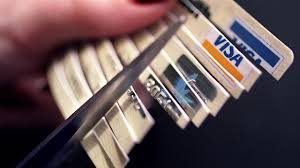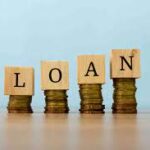 Having credit card debt or personal loans has become a natural habit for many of us – some people don’t even think about their credit card as “debt” but relying on it to get by from month to month is a bad habit that can damage your long-term financial situation. But like all bad habits it can be broken and your finances will be healthier for it. Credit cards are so common now that it is rare to find someone without one unless they have a poor credit history (or, indeed, no credit history at all if they are young and just starting their first job), but just because they are common doesn’t mean you need one. You might think card debt is somehow acceptable, certainly more so than, say, doorstep loans or other short-term loans but working to build up some savings is always a better option.
Having credit card debt or personal loans has become a natural habit for many of us – some people don’t even think about their credit card as “debt” but relying on it to get by from month to month is a bad habit that can damage your long-term financial situation. But like all bad habits it can be broken and your finances will be healthier for it. Credit cards are so common now that it is rare to find someone without one unless they have a poor credit history (or, indeed, no credit history at all if they are young and just starting their first job), but just because they are common doesn’t mean you need one. You might think card debt is somehow acceptable, certainly more so than, say, doorstep loans or other short-term loans but working to build up some savings is always a better option.
The problem with trying to build up savings or a “rainy day fund” is that it is hard work, really hard work. You will have to make sacrifices week after week, month after month. If you start to visualise how it would feel if, for instance, your car needed an expensive repair and you already had the money set aside, this can help you make the necessary sacrifices. Being able to visualise a debt free life can help you achieve it.
Of course, there is certain debt that all of us (or most of us) do need, such as a mortgage to buy our home – if we are lucky enough to be able to do that – so I’m not suggesting you have no debt whatsoever, just no debt in addition to your home loan. It is the other forms of debt that are most worrying and can create an enormous financial burden that we would all like to be free of.
Do you believe that it’s not possible to live without a credit card, or need serious encouragement to start reducing your debt and start saving? If so, these 3 simple tips will help you realise you can survive without your credit card:
Cut the Cost of Your Existing Debt
Have you checked your credit card interest rate recently – if not do that now and look at ways to reduce it. Two easy options are:
Transfer the debt to a card with a lower rate of interest (but watch out for short term deals that quickly become more expensive). Call the Customer Retention department of your card provider and just ask if they can reduce the interest rate (yes, really! This has worked for me twice before)
Once you have the lowest rate possible start increasing your regular payment – even if it’s just by $10 a month because every little will help. Some of the things I go without each month to reduce my debt are new clothes, luxury foodstuffs and wine. I have also reduced the amount I spend on birthday presents for my family because, after all, we will all be better off with less debt.
And the final, radical step that I took was to cut up my credit cards – that takes guts but I knew from past experience that if I just hid them in a drawer I would eventually take them out and start using them again.
Start Saving
To avoid having to start using the credit card again you need to start building up a small savings fund for emergencies. At the same time you are trying to pay down your debt – I did say it would be hard work but that’s the only way to break the cycle of re-using your credit card for emergencies.
Again every little helps and it soon mounts up if you are really prepared to make sacrifices. I find staying away from the shops is an easy way to avoid spending and, if you can, shop online for groceries and have them delivered. That way you can check how much you have actually spent before you click the Buy button.
Set Financial Goals
By setting financial goals it will be much easier to stop using credit and start saving because you can visualise the end result. Maybe it’s simply to have no debt, maybe it’s to have $500 or $5,000 in a savings account, each person’s goals are different but having one will help you achieve it, get into the habit of saving money and having a more secure financial future.




No Comments